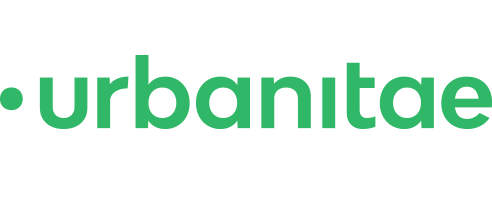
What Are Preferred IRR Projects at Urbanitae?
At Urbanitae, one of our top priorities is to make real estate investing more accessible and easier to understand—even when it involves structures that may seem complex at first glance. One such example is capital gains projects with a preferred IRR, a structure that has gained popularity among our investors and that combines the best of both worlds: the relative security of debt and the return potential of equity. But how does it actually work?
Equity and debt
Traditionally at Urbanitae, we work with two main types of projects: debt and equity. Debt projects are based on a loan agreement that offers a fixed return. Equity projects, on the other hand, involve the investor becoming a shareholder in the development company’s equity—meaning they take on more risk in exchange for greater return potential.
Equity, then, is the money that investors contribute to a project: they’re essentially betting on the project’s success. If it performs well, they earn a profit; if it underperforms, they earn less or could even lose money. That higher risk comes with the possibility of greater returns, if things go as planned. When investing through debt, the investor is not an owner but rather lends money to the project’s developers so they can carry it out.
But although the distinction is clear, debt and equity are not completely separate worlds. Think about buying a house. Typically, the (future) homeowner contributes some money upfront, but not the entire purchase price. That personal contribution is equity. Then comes the mortgage loan from the bank. It’s the combination of equity and debt (liabilities) that allows the buyer to purchase the property (asset).
Preferred IRR: a hybrid structure
When investing in debt, the key indicator is the interest rate: with that figure and the project term, you can calculate exactly how much you’ll earn. In equity projects, the key metric is IRR, the internal rate of return, which we can roughly define as the project’s total return divided by the time the investment is held.
Preferred IRR is an evolution of the equity model. It represents a partnership between Urbanitae and the developer in which investors are given priority in recovering both their principal and a minimum guaranteed return when profits are distributed. Only once that threshold—say, 12% or 14% annualized—is reached can the developer begin to earn returns on their investment.
In the words of Sergio Arana, Urbanitae’s Head of Real Estate, “it’s the best of both worlds: downside protection like debt, and the upside potential of equity.”
Advantages of the preferred IRR model
This model offers two key advantages:
- Payment priority: Investors recover their capital and reach their preferred return before the developer sees a single euro of profit.
- Target minimum return: The preferred IRR sets a floor, usually between 12% and 15% annually. While not contractually guaranteed—as is the case with all equity projects—it is structured with a sufficient buffer (the developer’s own capital contribution) so that Urbanitae’s investors can reach the target even if costs rise or timelines shift.
This makes preferred IRR a very attractive option for investors who want to maximize returns while enjoying more protection than a traditional equity structure. Unless there is a highly unfavorable scenario, the investor will achieve a minimum annual return higher than that of a debt project—with the potential for an even greater final return.
In this webinar, Sergio Arana and David Pérez, Head of Investor Relations at Urbanitae, explain how the preferred IRR works in detail.
How is it structured?
The key lies in the shareholders’ agreement between Urbanitae and the developer, which stipulates that investor returns have priority. This clause, combined with the developer’s capital contribution—typically 20–25% of the total project cost—serves as a guarantee of that preferred return.
Moreover, Urbanitae does not approve projects with a target IRR below 15%, which adds an extra layer of selectiveness in the opportunity vetting process.
In these cases, investors not only receive their preferred return, but may also benefit from additional profit-sharing, as outlined in the agreement. This means the final return can exceed the minimum threshold, just as it can in traditional equity schemes.
What if things go wrong?
In an extreme scenario—a “catastrophe,” as described in the webinar—the investor might not reach the expected return. However, Urbanitae’s accumulated experience and the legal structure of these agreements help to mitigate this risk as much as possible. Every project goes through a rigorous review process by the investment committee, including independent legal, technical, and commercial audits before being approved for funding.
Which projects offer a preferred IRR?
Every project with a preferred IRR is clearly labeled as such on its project page on the Urbanitae website. There, you can review the profit-sharing model, the shareholder agreement, and the projected financial scenarios, which help estimate the total return—since, as per CNMV regulations, Urbanitae does not publish explicit figures for these types of projects.
Capital gains projects with a preferred IRR are an innovative structure within real estate crowdfunding that aim to offer investors greater protection while also boosting potential returns. “It’s a way to closely align the interests of the developer and the investor,” said David Pérez. And judging by how well this model has been received on the platform, it seems that more and more investors are valuing this balance of caution and ambition.
Want to learn more about these types of projects? You can watch the full webinar and check out the active opportunities on our website.

